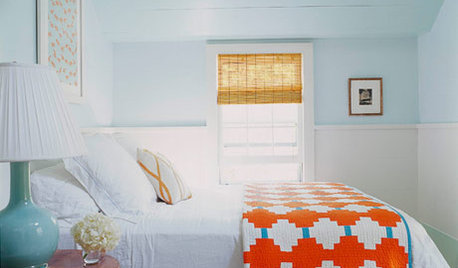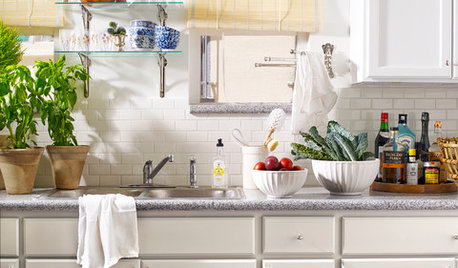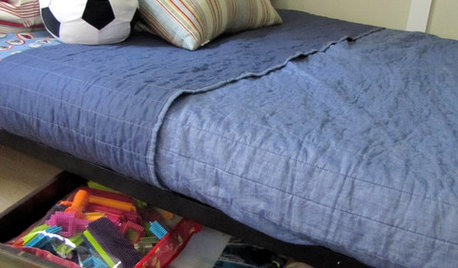Well, I was planning to wait until a week of operation in the grow box before posting. However, as I'm already seeing results, I decided to go ahead and post.
My house has only small, inconvenient, sill-less south-facing windows. Every year since the frame on my greenhouse rusted through, I've had to deal with leggy seedlings.
{{gwi:1023475}}
Leggy to the point that they'd often die before going outside, and where I had lost entire batches during hardening. I have been hesitant to rebuild my greenhouse or to invest in lighting setups because of the environmental and financial consequences of greenhouse heating and light creation, respectively. But this year, after watching my seedings yet again become uber-leggy, I decided to do something about it: to build as cheap of an LED grow box as I could that would be good enough to keep the seedlings from getting leggy.
I shopped around, trying to find the best deal on pre-wired LEDs. I didn't want to have to solder thousands of LEDs myself; that just sounded like a Bad Idea(tm). 90W UFO grow lights are name brand, but retail for about $225. There are LED panels, but they're $30-40 each for only 14W of LEDs. Ultimately, I found a cheap solution (that would have been even cheaper had I done this in January): LED christmas lights. 7W of blue LED christmas lights goes for about $10 (incl. shipping) on Ebay with buy-it-now. Less if you're willing to wait and bid. Reds are slightly more, at $12-$13 or so, and orange are hard to come by (most other colors aren't very important), but their price varies a lot.
I started out with ordering 10 blue chains -- 70W, 1000 LEDs, transparent strings, outdoor-rated. Little did I know it'd take over two weeks for them to get my lights to me. :P In the meantime, I built my grow box:
The frame was made of a piece of cheapo 2'x6' wood lattice that I had sitting around in my garage. I nailed it to two 8' 1x2s and scraps from another for horizontal crossbeams:
{{gwi:1023478}}
{{gwi:1023479}}
I then covered the lattice in Elmer's glue and placed aluminum foil along its length, padding it down gently along each seam:
{{gwi:1023483}}
{{gwi:1023487}}
NOTE: I became impatient and brought it in before the glue was dried. Bad idea; it dripped, and I was stuck wiping it off the foil and the floor. Be patient!
Indoors, I drilled holes in the ceiling and installed two Menards ceiling hooks -- the type you hang plants from. I attached loops of clothesline to each 2' end of the panel, and then attached those loops to clothesline that ran through each of the hooks, was knotted together into a single line, and then ran to an anchor point (in my case, a rocking chair). The loops offer resistance against the panel tilting front to back, but let you tilt it if you want it, while the line that goes through the ceiling hooks lets you adjust it up and down for when you need to work under it.
NOTE: while the panel may appear like it would make a great shelf for another layer of plants, it won't -- not in this incarnation, at least. It's already surprisingly heavy, and the 1x2s already let it get a slight bend. It wouldn't support the weight of plants on top of it, and the additional weight, if not simply too much for the ceiling hooks, would require way too strong of an anchor and make adjusting up and down too difficult.
Next, I punched holes at regular intervals and looped long perhaps 50 twisties around lattice and dangled their ends below the foil. I used tape to seal off the foil to prevent the tears from spreading easily. Then I taped foil to hang down on all sides of the chamber -- two feet of foil on each side, with the sides sticking out beyond the frame but not being taped together (so that you can individually lift up each side). It gets a nice, spaceship glow at night (here it is with fluorescent light, while waiting for my LEDs to arrive)
{{gwi:1023489}}
NOTE: It would be far easier to attach your foil and lights *before* it is strung up in the air. My back and arms were really angry with me on two occasions: when I attached the twisties and foil, and when I attached the LEDs. You have to contort to strange angles while it's hanging. Even easier than twisties would have been just to glue the LEDs in place. I used twisties because I wanted the LEDs to be removable, but it was enough work to attach them (half an hour, perhaps more) that I don't think I'd want to attach or remove them at regular intervals.
NOTE: I hooked the foil pieces to each other with just little pieces of tape. Bad idea -- I should have used long strips of tape, the length of the foil. The little pieces let light leak out through the cracks, and I spent a long time patching up the leaks into smaller leaks with more little pieces of tape -- for an imperfect result.
At one point while waiting for my LEDs, I became desperate and put my leggy plants outdoors to try and get some sun. Bad idea -- still too cold in Iowa. Burned them and lost some tomatoes and lettuce. So, I just kept them in the chamber with a little CFL lamp that had the brightest, bluest light we had available (it draws 40W; I forget how many lumens). To up the reflections, I dusted the tops of my soil with perlite.
Finally, two days ago, the first batch of LED lights arrived. I installed the LEDs on the twisties, which as mentioned earlier, takes a lot of work, and plugged them into cheapo 6-slot power strips ($3 each). Since they're christmas lights, they're waterproof. Since they're not all crammed tightly together, each LED gets airflow and won't overheat, without needing fans (like the UFO lights do). One minor inconvenience: the lights come with an 8-way control box designed for christmas light effects, like chasing, blinking, etc. Every time it loses power, you have to re-choose "always on" on every box. If I tire of this, I could always cut the boxes off and buy a single power supply to wire all the chains to.
{{gwi:1023471}}. {{gwi:1023473}}.
{{gwi:1023490}}
{{gwi:1023491}}
{{gwi:1023492}}
This brings up some curious properties of the blue LED light. It's essentially monochromatic, and it's a frequency that human vision isn't very sensitive to (but plants are). Plant leaves look dark gray under it, while the perlite looks ghostly. While it doesn't seem any brighter than the 40W CFL to my eyes (perhaps even a bit dimmer), working in it for a few minutes obliterates my night vision; whenever I stop looking in the chamber, the room around me looks very dim. So whatever determines how much my irises dilate must be more sensitive to the light than my vision. It also really confuses the heck out of my camera. The camera not only has trouble rendering colors from it other than a pure blue, cyan, black, and white (often with fairly stark boundaries), but it can't figure out how bright it is. Taking the panoramas took shooting many times more shots than were assembled because, on the same settings, some looked way too bright and others were nearly black.
Neat stuff. ;)
As mentioned at the beginning, I was expecting to wait for a week before posting this so I'd have some results of note. However, in just 24 hours, I already had noteworthy results. All of the tomato plants are clearly showing small true leaves in the center that were mere buds before. The squash that were laying limp along the ground are now starting to rise up into the air -- even the pumpkin. Even the nearly-dead lettuce is perking up. So, for 24 hours, that's a pretty promising start!
{{gwi:1023493}}
I'll post updates as to where things go from here. I've also got some red and orange chains incoming (and a couple more blues), and a UFO that I got a steal on ($137); I may add a red or two and an orange or two to the current chamber, and to make a similar red-dominated chamber for older plants. Ultimately, I'd like my veg chamber to have about 85W in it, and my grow chamber about 120W. Blue = short, stocky, leafy; Red = tall, flowering/fruiting and usually slightly more efficient growth; Orange = stimulates carotenoids, helping produce antioxidants for the plants as well as some energy.
















brazenspider
wordwiz
Related Professionals
Maple Valley Landscape Architects & Landscape Designers · Woodinville Landscape Architects & Landscape Designers · Allentown Landscape Contractors · Fort Atkinson Landscape Contractors · Hannibal Landscape Contractors · Westford Landscape Contractors · Wolf Trap Handyman · Cockeysville Fence Contractors · Kendall Fence Contractors · Lexington Fence Contractors · Markham Fence Contractors · Orange County Fence Contractors · Owings Mills Fence Contractors · Mounds View Roofing & Gutters · West Orange Roofing & GuttersKaren PeaseOriginal Author
Karen PeaseOriginal Author
jajm4
Karen PeaseOriginal Author
Karen PeaseOriginal Author
Karen PeaseOriginal Author
Karen PeaseOriginal Author
ontheteam
californian
Karen PeaseOriginal Author
californian
Karen PeaseOriginal Author
californian
Karen PeaseOriginal Author
Karen PeaseOriginal Author
Karen PeaseOriginal Author
clawson
Karen PeaseOriginal Author
Karen PeaseOriginal Author
dmatukian
Karen PeaseOriginal Author
dmatukian